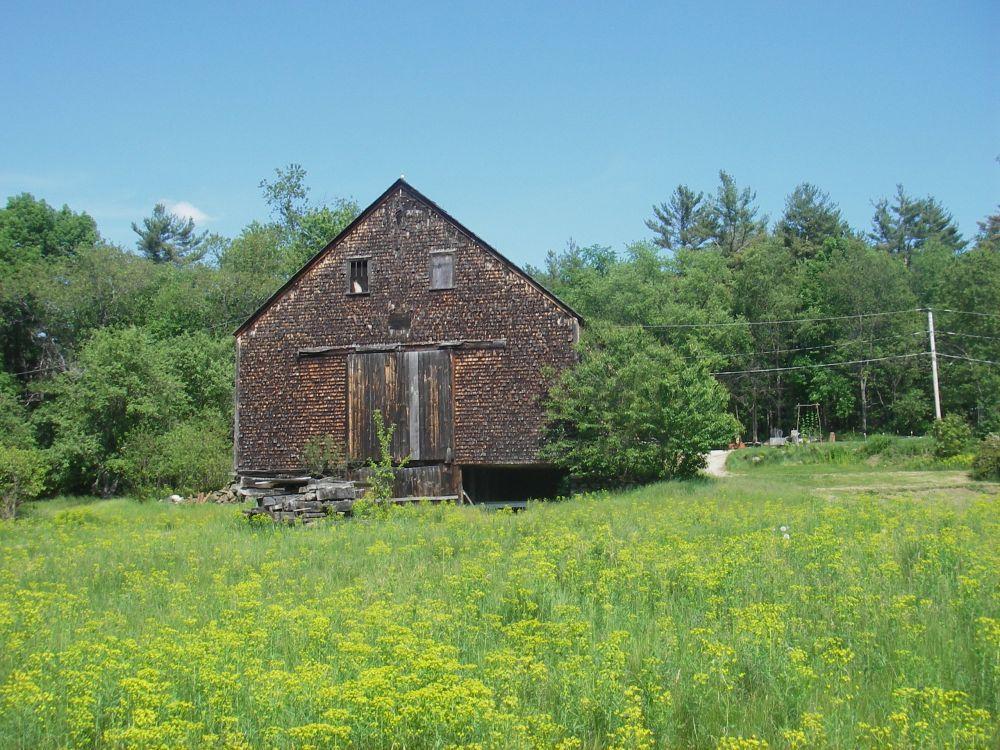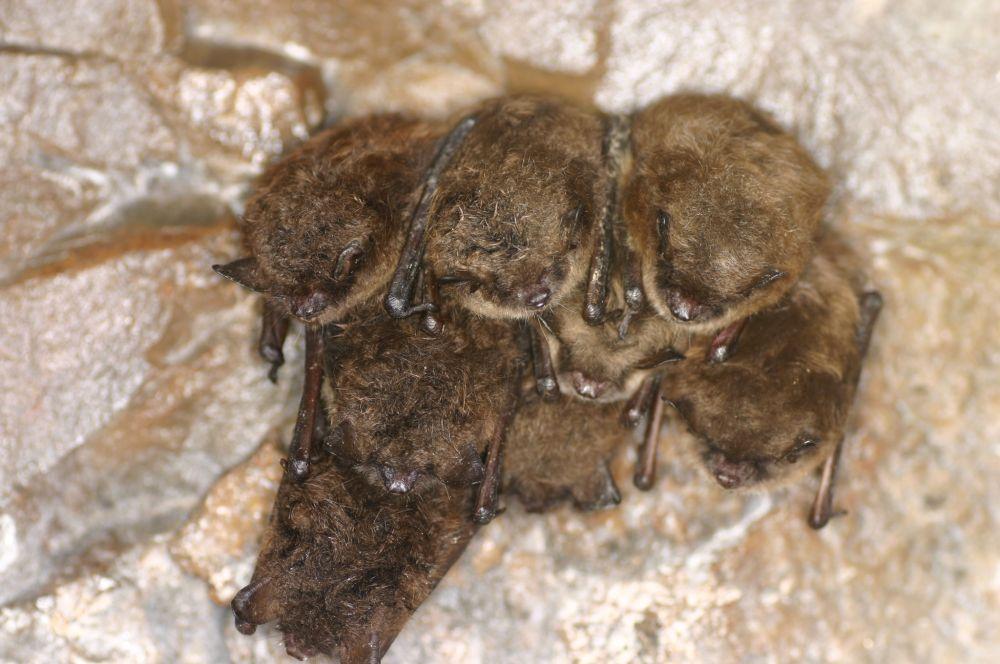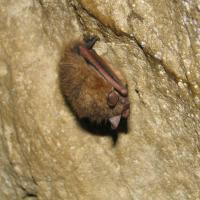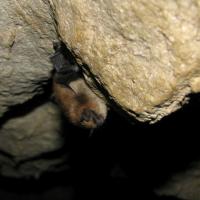Nature's View
- Tags:
- Wildlife

An old barn provides perfect summer nursery colony for female little brown bats. Bonus: open fields nearby is perfect insect foraging habitat for females nursing growing pups. Photo courtesy of Susan vonOettingen, USFWS
I can no more easily imagine a summer evening without bats overhead than the night sky devoid of stars…
On our small New Hampshire farm, we’ve always watched bats feeding over pastures and the adjacent Lane River wetlands. Now the specter of a rapid regional collapse of bat populations due to White Nosed Syndrome (WNS), caused by the fungus Geomyces destructans, brings new anxiety to bat watching. I can no more easily imagine a summer evening without bats overhead than the night sky devoid of stars.
Of eight species of bats in New Hampshire, most leave our state each winter and return in spring. Three species – Red bats, Hoary bats and Silver-haired bats (the so-called “tree bats”) – migrate south to overwinter in a variety of habitats including forest leaf litter. These species are not yet suffering from White Nose Syndrome because they disperse rather than congregate in the cave habitats colonized by the WNS fungus.
Five species do overwinter in New Hampshire mines or migrate to cave hibernacula in Vermont, western Massachusetts, or Upstate New York. In winter, bats require specialized habitats where temperatures remain at or above 40 degrees with 90 percent relative humidity. The most numerous species of wintering bats in Northeast hibernacula are Little brown bats accompanied by fewer Northern long-eared bats. There are fewer still Eastern pipistrelles and State Endangered Small-footed bats. Big brown bats are harder to count because many hibernate inside buildings or deep in narrow rock crevices that are impossible to survey.

WNS was first detected in Albany County, NY in 2007 and was first discovered in Vermont in 2008. Vermont has the largest known regional hibernaculum at Aeolus Cave. Before WNS, Aeolus had an estimated population of 200,000 to 300,000 bats. According to researchers, bat numbers there plummeted by as much as 90 percent – a loss of hundreds of thousands of bats – in a single location. WNS first appeared in New Hampshire bats in 2009, so the Granite State is a full year behind Vermont in measuring the effects of the fungus.
Last winter, biologists dedicated to managing bats in New Hampshire were particularly discouraged by their findings during a February survey of a Grafton County mine that is the second largest hibernaculum in the state. New Hampshire Fish and Game Department Nongame and Endangered Wildlife Biologist Emily Brunkhurst joined biologists from Franklin Pierce University and St. Paul’s School for a midwinter survey of known bat hibernacula in New Hampshire. In all, biologists found 96 dead and 185 live bats in one mine, with 76 of the live bats showing evidence of WNS. This total of 281 bats was down by 83 percent from 2009. Over several weeks, the team surveyed five more bat hibernacula and located a new one. Statewide, bat population numbers were down significantly for an overall population decline of 66 percent since last year.

From June to late August, female little brown and big brown bats may use buildings for large summer maternity colonies. Meanwhile, small groups of males roost in bat houses, beneath loose tree bark, or on building exteriors. Most bats succumb to WNS in their winter hibernacula or, if they emerge from hibernation in spring malnourished due to WNS, they are unlikely to survive to breed. Relatively long-lived, bats have slow reproductive rates. Prospects for bat population recovery from WNS will be slow. A summer maternity colony in Peterborough that once hosted 2,000 bats had less than 100 bats left last summer, while other summer bat colonies appeared unaffected in 2009.
One of the most important ways in which New Hampshire residents can help is by better understanding why bats are ecologically important. In New England, bats are the most numerous predators of night flying insects. Bats provide critical ecological services by consuming insects including agricultural and forest pests such as the adult moths of defoliating forest tent caterpillars. The ecological value of insect pest control cannot be estimated, although we might learn the hard way if bats are extirpated from the forests of the Northeast.

According to NHFG Wildlife Biologist, Emily Brunkhurst, “Bats are critically important to humans. We need to understand the possible impacts of WNS on insects and possible disruptions to ecological services that bats have traditionally provided us.”
Ironically, a small silver lining in the unfolding ecological calamity of WNS is the unprecedented public interest and heightened awareness of the plight of bats.
Property owners are now asked to tolerate and accommodate bats rather than exclude summer bat maternity colonies in attics, barns, or garages.
Beyond mere tolerance for New Hampshire bats, local citizen scientists can help with regional research and monitoring related to WNS. The NH Fish and Game website is seeking barn or attic colony stewards willing to complete a bat emergence survey three times over the summer.
To learn more about how to participate in emergence surveys, to report bat sightings, or link to a shared bat database with Vermont, visit the N.H. Fish and Game website at wildlife.state.nh.us/Wildlife/Nongame/bats.html.
Back on our farm, we think we see fewer bats this summer. It’s a worrisome vigil. While we still enjoy watching them flutter over the pasture, we also ponder what would happen if they were to disappear. Losing bats would be very troubling considering the service they provide to our Tree Farm’s gardens, orchard, and woods.
In the scant summer moonlight, dark clouds scud eastward from Vermont and Upstate New York, only temporarily obscuring the summer stars overhead.
